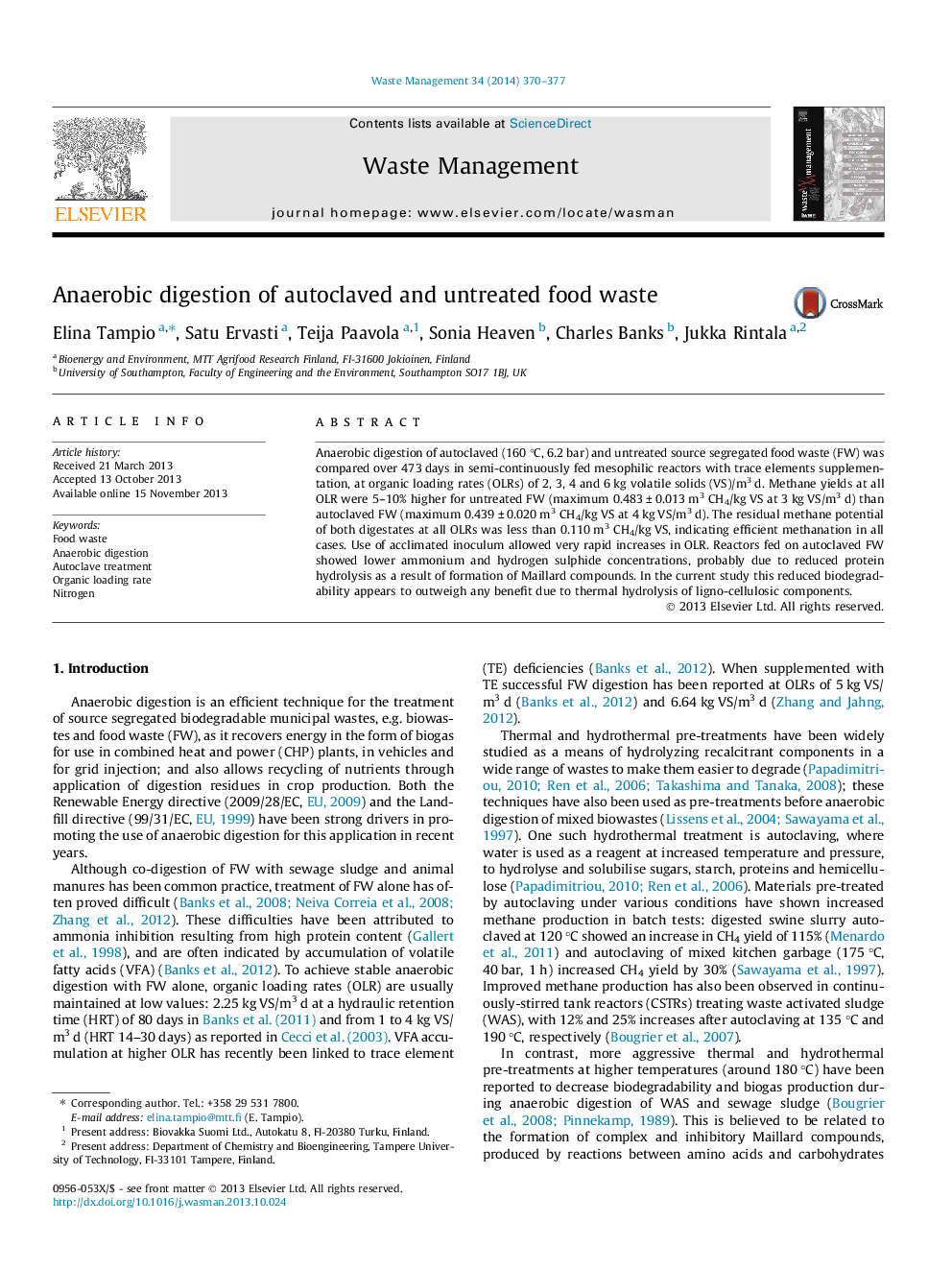| Article ID | Journal | Published Year | Pages | File Type |
|---|---|---|---|---|
| 6355174 | Waste Management | 2014 | 8 Pages |
â¢Autoclaving decreased the formation of NH4-N and H2S during food waste digestion.â¢Stable digestion was achieved with untreated and autoclaved FW at OLR 6 kg VS/m3day.â¢Use of acclimated inoculum allowed very rapid increases in OLR.â¢Highest CH4 yields were observed at OLR 3 kg VS/m3day with untreated FW.â¢Autoclaved FW produced highest CH4 yields during OLR 4 kgVS/m3day.
Anaerobic digestion of autoclaved (160 °C, 6.2 bar) and untreated source segregated food waste (FW) was compared over 473 days in semi-continuously fed mesophilic reactors with trace elements supplementation, at organic loading rates (OLRs) of 2, 3, 4 and 6 kg volatile solids (VS)/m3 d. Methane yields at all OLR were 5-10% higher for untreated FW (maximum 0.483 ± 0.013 m3 CH4/kg VS at 3 kg VS/m3 d) than autoclaved FW (maximum 0.439 ± 0.020 m3 CH4/kg VS at 4 kg VS/m3 d). The residual methane potential of both digestates at all OLRs was less than 0.110 m3 CH4/kg VS, indicating efficient methanation in all cases. Use of acclimated inoculum allowed very rapid increases in OLR. Reactors fed on autoclaved FW showed lower ammonium and hydrogen sulphide concentrations, probably due to reduced protein hydrolysis as a result of formation of Maillard compounds. In the current study this reduced biodegradability appears to outweigh any benefit due to thermal hydrolysis of ligno-cellulosic components.
